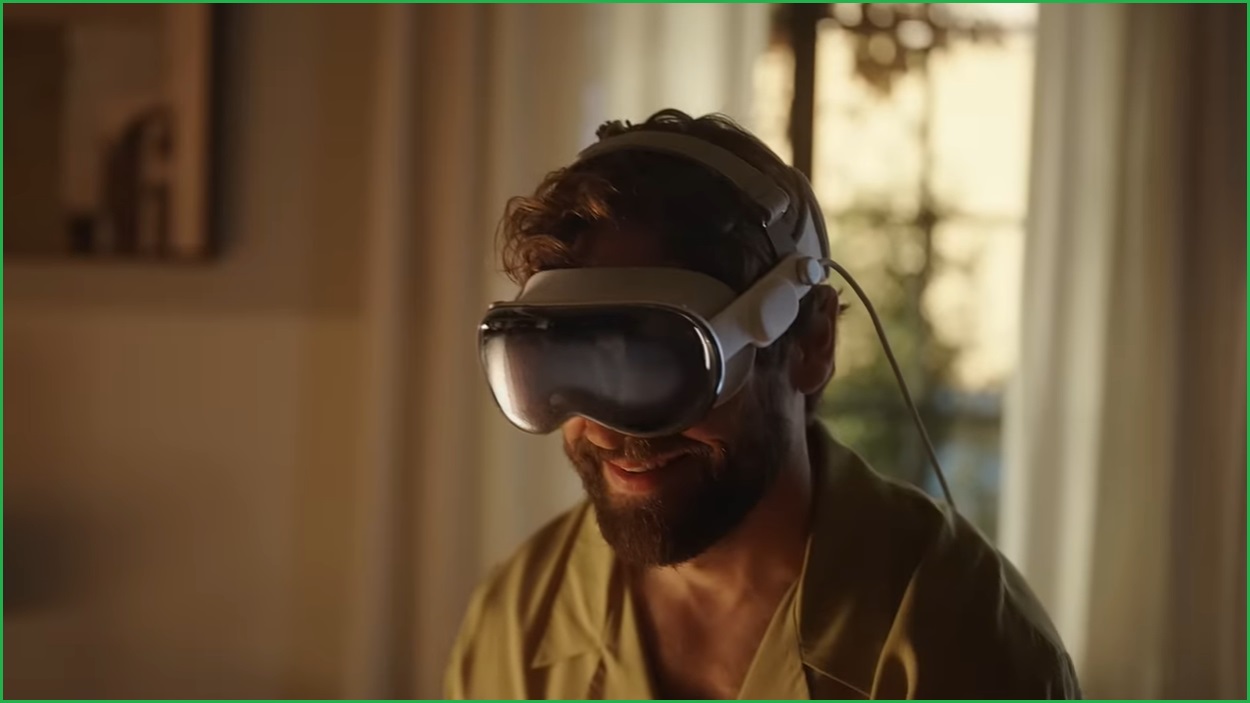By all accounts, Apple’s latest product, the Vision Pro, is a technological marvel and a glimpse into the future of computing.
It’s also really ugly.
Not even the professional photographers of fashion and pop culture magazine Vanity Fair could make Apple CEO Tim Cook look cool wearing a Vision Pro.
Augmented, virtual, and mixed reality (AR/VR/MR) headsets have always had this problem.
At worst, they’re bulky and cover your face like high-tech ski goggles. At best, they’re a hidden camera that people around you think is secretly recording them.
When Google was testing its AR glasses – unimaginatively called ‘Glass’ – back in 2013, the select few chosen to be part of its exclusive ‘Explorer’ program were given a pejorative nickname: glassholes.
At the time, Wired described Glass as “a class divide on your face” which other people found immensely off-putting, not least because they were a privacy nightmare.
Priced at US$3,499 ($6,349 if you want a grey import) the Vision Pro is every bit as much of a wearable class divide as the Glass.
Within days of hitting US shelves, people started filming themselves wearing the Vision Pro as they walked across the street and through shopping centres.
They were also filmed driving another lowlight of recent ‘futuristic’ design and status symbol for a certain demographic: the Tesla Cybertruck.
It’s not just the Vision Pro itself that’s ugly.
The enormous price tag is ugly.
Personas, a computer-generated “dynamic, natural representation of your face and hand movements” for use on video calls, are ugly.
And the very idea that a multi trillion-dollar company like Apple wants to stand in front of your eyes and tell you what to see is ugly.
Substituting our reality for Apple's
For years, I was quietly excited about Apple's headset. I read up on all the rumours and leaks, waiting for the announcement to finally arrive.
As a glasses-wearing science fiction fan, the idea of having an overlay on which I could read messages and interact with the world around me seemed like the coolest thing imaginable.
It was futuristic, high tech, and inevitable.
But by the time Apple made its long-awaited announcement last June, the concept had lost its sheen for me.
Perhaps that’s because at the time I was expecting my first child and I was becoming ever more conscious of the world she will grow up in.
A world of pervasive surveillance where the unelected giants of cloud capital become more powerful than democratic nations, where cyberspace is flooded with enraging disinformation and endless AI-generated slop, where artists spend more time creating personal brands than pursuing their life’s passion.
Techno-optimists have long promised that digital technologies would liberate us from the trappings of modern life by providing near-instant communication, access to almost all of humanity’s collective knowledge, and a catalogue of infinite entertainment.
But to get here, we have ceded the flow of information to (mostly) US tech giants who actively spy on us and try desperately to hold our attention for the sake of advertising revenue.
Every day, our collective reality is becoming more mediated by companies who care only about maximising the movement of money from our pockets into theirs.
Companies like Apple and Meta want to erase physical reality and replace it with virtual ones that they can control and monetise.
We can’t yet know what the consequences of tech like the Vision Pro will be.
But already we know large copyright holders limit what you can do with the Vision Pro.
As editor-in-chief of the Verge, Nilay Patel wrote in his review, the device “can literally DRM your eyes” by blacking out screen captures of TV and movies shown on Disney Plus and Apple TV.
“It’s strange to experience a reality where big companies can block you from capturing what you see," he wrote.
ok this demo is better than apple's actual ads for vision pro 🤯 pic.twitter.com/DE9IGdGCcG
— kitze 🚀 (@thekitze) February 4, 2024
There are plenty of videos out there showing what it’s like to use a Vision Pro, though no doubt none of them come close to the real experience.
Admittedly, it's still early days and Apple is waiting for its ecosystem of developers to mobilise and create a ‘killer app’ that makes headsets a must-have product.
But for now, it looks all you can really do is fill your world with screens.
Ugly, ugly screens.










